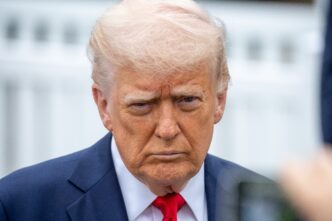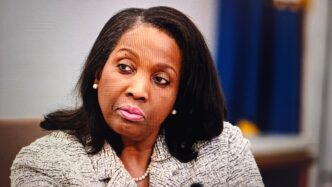Executive Summary
The Story So Far
Why This Matters
Who Thinks What?
Chinese Premier Li Qiang announced on Wednesday that China’s economy is projected to surpass 170 trillion yuan ($23.87 trillion) by 2030, positioning the nation as a significant market opportunity globally. Speaking at the 8th China International Import Expo (CIIE) in Shanghai on November 5, 2025, Li criticized rising trade barriers and tariffs, advocating for a reform of the global economic trading system to enhance its fairness and transparency.
Economic Projections and Trade Philosophy
Premier Li’s projection aligns with proposals for China’s upcoming five-year plan, which anticipates an average annual growth rate of 4.17% over the next half-decade. China’s Gross Domestic Product is expected to exceed 140 trillion yuan this year, underscoring the scale of its economic expansion.
Li specifically condemned tariffs, stating they are “seriously undermining international economic and trade rules, and also disrupting the normal operation of enterprises in various countries.” He emphasized China’s ambition to create a global trading system that is “more reasonable and transparent,” particularly for developing nations.
The China International Import Expo (CIIE)
The CIIE was initiated by President Xi Jinping in 2018 as a platform to showcase China’s commitment to free trade and address international criticism regarding its substantial trade surpluses. Despite its stated purpose, skeptics note that China’s trade surpluses with many markets have continued to grow in the years since the expo’s inception.
This dynamic highlights a key tension: while China’s supply of manufactured goods to the world is expanding, its contribution to global demand through imports has been less significant. Economists suggest this imbalance fuels trade tensions abroad and contributes to deflationary pressures domestically.
Navigating Global Trade Tensions
Global trade patterns have been heavily influenced by tariffs imposed by President Donald Trump, sparking a trade war with China that has seen periods of escalation and de-escalation. A recent development saw President Trump and Xi Jinping meet in South Korea, resulting in a trade truce.
Under this agreement, the U.S. consented to reduce some tariffs on Chinese goods and pause certain export controls. In return, China agreed to halt new export restrictions on rare earth minerals and magnets, and to resume purchases of American soybeans. However, analysts caution that this understanding may represent only a fragile truce, with underlying trade issues still unresolved.
Premier Li reiterated China’s commitment to openness, stating the nation wants to increase its imports of high-quality products. He encouraged foreign enterprises to “develop in China with more peace of mind, more comfort and more confidence.”
Shifting Trade Dynamics
China’s trade surplus is on track to exceed last year’s record of approximately $1 trillion, as exporters have compensated for a significant decline in U.S. sales—due to higher tariffs—by expanding sales to other global markets. This often involves selling at a loss to gain market share.
In September, exports to the U.S. fell by about 27% compared to the previous year. Conversely, shipments to the European Union, Southeast Asia, and Africa experienced robust growth of 14%, 16%, and 56% respectively. The current CIIE sees participation from over 155 countries, regions, and organizations, with more than 4,100 overseas enterprises. U.S. companies continue to maintain the largest exhibition area for the seventh consecutive year, underscoring their sustained interest in the Chinese market.
Outlook on China’s Economic Future
Premier Li Qiang’s address at the CIIE underscored China’s ambitious economic growth targets and its vision for a reformed global trading system. While presenting China as a significant opportunity amid global trade friction, the nation continues to navigate the complexities of managing its trade surpluses and maintaining its commitment to opening its market further.








